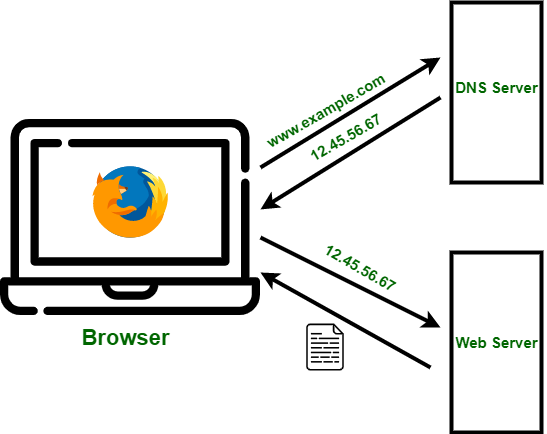DNS (Domain Name System)
 Jitendra Yadav
Jitendra YadavWhat is DNS?
DNS (Domain Name System) is a hierarchical naming system used to translate human-readable domain names (like www.example.com) into machine-readable IP addresses (like 192.0.2.1). This translation is essential for users to access websites and online services easily.

Key Features of DNS
Name Resolution: Translates domain names to IP addresses, allowing web browsers to locate resources.
Scalability: Designed to handle a massive volume of queries, thanks to its distributed architecture.
Redundancy: Provides high availability through multiple DNS servers.
Caching: Temporarily stores DNS query results to improve response times for repeat requests.
Load Balancing: Distributes incoming traffic across multiple servers to optimize performance and reliability.
Common DNS Record Types
A Record: Maps a domain name to an IPv4 address.
- Example:
example.com→ 192.0.2.1
- Example:
AAAA Record: Maps a domain name to an IPv6 address.
- Example:
example.com→ 2001:0db8:85a3:0000:0000:8a2e:0370:7334
- Example:
CNAME Record: Canonical Name record that aliases one domain name to another.
- Example:
www.example.com→example.com
- Example:
MX Record: Mail Exchange record that specifies mail servers for a domain and their priorities.
- Example:
example.com→mail.example.com(priority 10)
- Example:
TXT Record: Allows you to store text information related to a domain, often used for verification and security (like SPF records).
- Example:
example.com→ "v=spf1 include:_spf.example.com~all"
- Example:
NS Record: Name Server record that specifies authoritative DNS servers for the domain.
- Example:
example.com→ns1.example.com
- Example:
SRV Record: Service record that specifies information about a service available in a domain, such as a specific port for a service.
- Example:
_sip._tcp.example.com→ 10 60 5060sipserver.example.com
- Example:
Major DNS Services in Cloud
AWS (Amazon Web Services)
Amazon Route 53:
Domain Registration: Allows you to register new domain names.
Health Checks: Monitors the health of resources and routes traffic to healthy endpoints.
Routing Policies: Supports various routing policies like latency-based and geo-routing.
Integration: Works with other AWS services such as EC2, S3, and CloudFront.
Azure (Microsoft Azure)
Azure DNS:
Domain Management: Manage DNS zones and records easily via the Azure portal.
Global Availability: DNS services are hosted in multiple Azure data centers around the world.
Custom DNS Zones: Create and manage your own DNS zones.
Integration: Seamlessly integrates with Azure services like Azure Traffic Manager and Azure CDN.
Summary
DNS is vital for navigating the internet, converting user-friendly domain names into IP addresses. Common DNS record types include A, AAAA, CNAME, MX, TXT, and others, each serving specific functions. Major cloud providers like AWS and Azure offer robust DNS services—Amazon Route 53 and Azure DNS—providing advanced features for domain management, traffic routing, and integration with their ecosystems.
Subscribe to my newsletter
Read articles from Jitendra Yadav directly inside your inbox. Subscribe to the newsletter, and don't miss out.
Written by

Jitendra Yadav
Jitendra Yadav
As a DevOps Engineer, I specialize in managing release cycles and Azure infrastructure using Terraform. I automate deployments through YAML code and handle various automation requirements using PowerShell and Python. My responsibilities include managing app services, storage containers, and Kubernetes, providing solutions for software needs like backup and disaster recovery, and overseeing Azure policies. With strong end-to-end debugging skills, I excel at log analysis and code inspection to identify and resolve issues effectively.